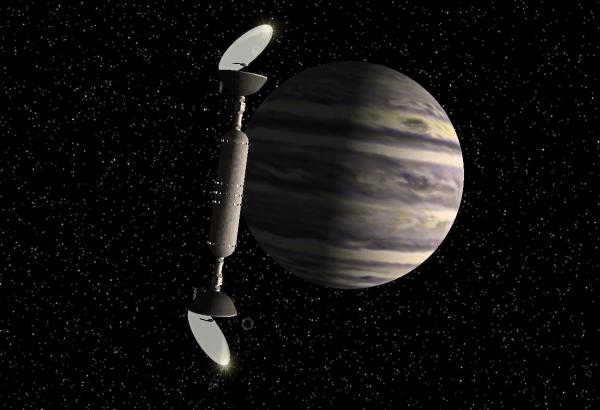BY LETTER
Megastructure Classification Systems
Technology > Application > Envirotech
Technology > Application > Infrastructure
Technology > Application > Megascale Engineering
Technology > Application > Infrastructure
Technology > Application > Megascale Engineering
Systems for classification of artificial space structures |
 Image from Steve Bowers |
Artificial structures in space take many forms and sizes; a number of systems of classification have been used at various times to distinguish between them. One early system is the IA classification system, used since before the Great Expulsion period. When this system was first devised most of these types of structures were still hypothetical.
This system uses three main criteria, the gravitational environment used in the structure, the size, and number of inhabitants.
Gravity Index
A - Artificially generated gravity; since no system of gravity generation that does not use mass or rotation has been discovered, this classification is used for persistent virtual environments.N - Not applicable. Lofstrom Loops, mass streams, starlifting swarms and similar structures do not incorporate gravitational environments.
R - Rotational or centripetal Gravity. Rotating space habitats of many kinds, from quite small to very large indeed;
S - Spherical or Classic gravity Artificial planets, deep well industrial zones, suprashells, Alderson Disks.
Z - Zero or Microgravity. Nany habitable structures are microgravity habitats, some of them very large. These structures are generally inhabited by sophonts who are specially adapted for zero-gee.
Size Index
longest dimension1 = 10m
2 = 100m
3 = 1 km
4 = 10 km
5 = 100 km
6 = 1,000 km
7 = 10,000 km
and so on
Habitability Index
Number of human-equivalent sophonts who inhabit a particular structure. Note that many of the largest structures are very thinly populated, and could sustain many more, especially with modern life-support technology.i = 10 persons
ii = 100 persons
iii = 1000 persons
iv = 10,000 persons
v = 100,000 persons
vi = 1 million persons
vii = 10 million persons
viii 100 million persons
ix = 1 billion persons
x = ten billion persons
xi = 100 billion persons
xii = 1 trillion persons
and so on
A significant number of structures, especially in the Keter Dominion and elsewhere, hold large numbers of aioids and virtuals which are human-equivalent or above; the habitability index of these structures can be given in human equivalent values, or in more detail when necessary.
Examples
Finn Mac Cumhail (O'Neill colony, Tau Ceti system) R4ivRendell Ring (Arkab Prior B) Bishop Ring R6vii
Hope (Ao Lai) Artificial Planet: S7viii (estimate)
Spaghetti (Cableville) Topopolis R11xi
Felicidade (virtual dyson sphere) A11xii
The FGB Classification System
A more informal system is the FGB system, often used by galactic almanacs1. "small" (typically less than one km in diameter)
2. "cityscale" (1 - 100 km, could fit the population of a small, or in some cases not-so-small, city inside)
3. "subplanetary (100 km - 10,000 km, could fit multiple large cities or small countries inside)
4. "superplanetary" (10,000 km - 10 million km, capable of housing the population of an entire planet with room to spare)
5. "dyson" (1 million - 1 billion km or so, energy use at least that of a red dwarf star's output)
6. "superdyson" (more than a billion km) (some examples of this kind of structure have been observed in other galaxies and in intergalactic space, such as the Leviathan)
plus gravitational environment type:
a. microgravity only
b. rotating / acceleration (cylinders, rings, etc.)
c. mass-generated gravity (e.g., Alderson disks such as Rak Mesba, the only known example)
d. virtual gravity in simulated environments
Related Articles
Appears in Topics
Development Notes
Text by Isaac Arthur, FrodoGoofball
additional material by Steve Bowers
Initially published on 25 September 2014.
additional material by Steve Bowers
Initially published on 25 September 2014.
Additional Information
Acknowledgements to Isaac Arthur for his Megastructure Classification system, used with permission






